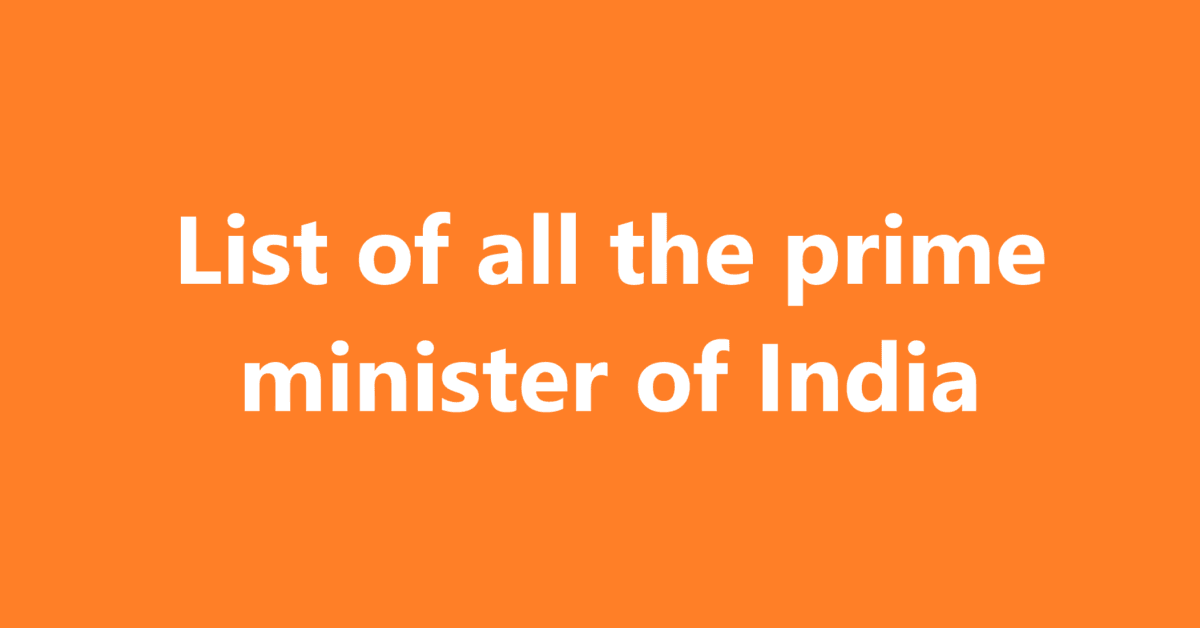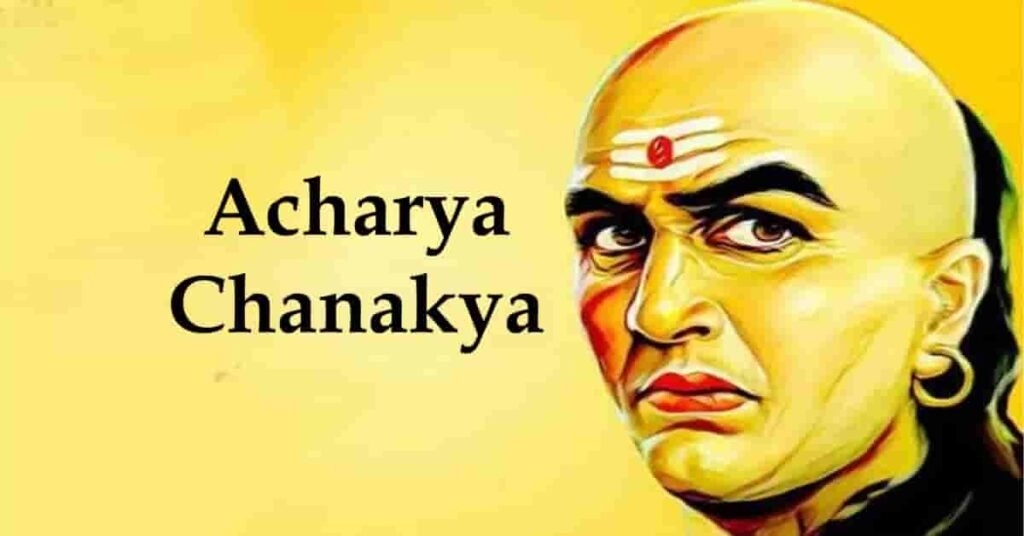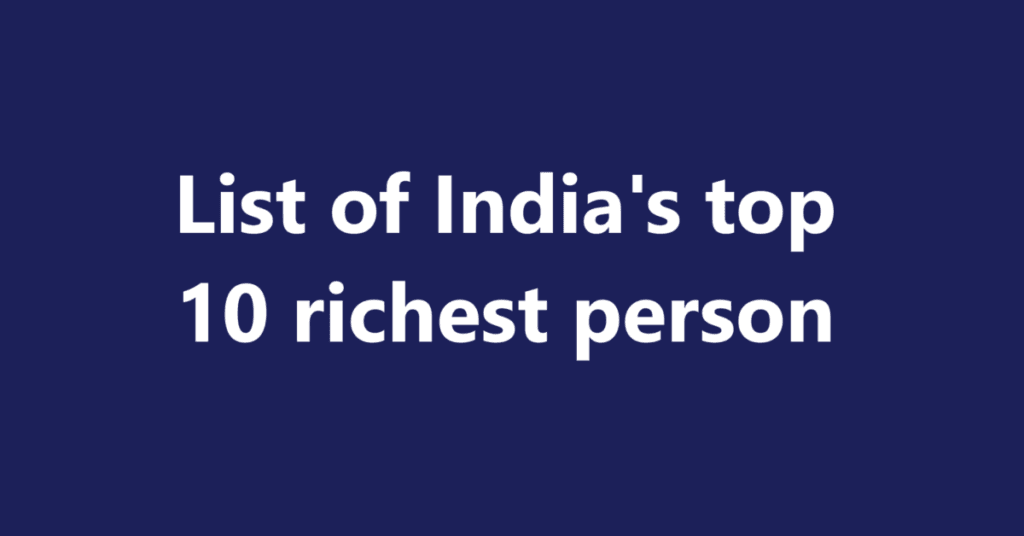Here is a list of all the Prime Ministers of India, along with a brief introduction for each:
1. Jawaharlal Nehru (1947-1964)
The first Prime Minister of India and a central figure in Indian politics before and after independence. He was a pivotal figure in the Indian National Congress and a key architect of modern Indian state policy, emphasizing education and scientific advancements.
2. Gulzarilal Nanda (Acting: 1964)
He served as the acting Prime Minister of India twice, first after Nehru’s death and again for a short period after Lal Bahadur Shastri’s death. He was a prominent politician and civil servant, and he played a significant role in India’s planning and economic policies.
3. Lal Bahadur Shastri (1964-1966)
The second Prime Minister of India, he is remembered for his leadership during the 1965 Indo-Pak war and his slogan “Jai Jawan Jai Kisan”. He promoted the White Revolution and made significant contributions to the Green Revolution.
4. Gulzarilal Nanda (Acting: 1966)
As mentioned above, he served again in an acting capacity after Lal Bahadur Shastri’s death, momentarily leading the country until Indira Gandhi took office.
5. Indira Gandhi (1966-1977, 1980-1984)
The first and, to date, the only female Prime Minister of India, she served two terms. Known for her centralizing policies and a strong leadership style, she led India during the 1971 Indo-Pak War, which resulted in the creation of Bangladesh. Her period was marked by the Emergency (1975-1977), a time of political turmoil.
6. Morarji Desai (1977-1979)
The first Prime Minister not from the Indian National Congress, he led the Janata Party government. His tenure was marked by a focus on economic reforms and reducing poverty, but it was disrupted by internal conflicts.
7. Charan Singh (1979-1980)
He served as Prime Minister for a short period, known for his populist policies focused on agrarian reforms. His government faced challenges and fell due to a lack of support from larger political parties.
8. Indira Gandhi (1980-1984)
She returned to power for a second term, focusing on economic growth through modernization efforts and social development. Her tenure ended with her assassination in 1984.
9. Rajiv Gandhi (1984-1989)
Taking office at a young age after Indira Gandhi’s assassination, he advocated for technology and modernization in India. He initiated policies that aimed to liberalize the economy but faced challenges, including corruption allegations and political opposition.
10. Vishwanath Pratap Singh (1989-1990)
He is remembered for implementing the Mandal Commission report, which aimed to increase reservations for backward classes in government jobs and educational institutions, leading to socio-political upheaval.
11. Chandra Shekhar (1990-1991)
His government lasted only a few months, marked by significant economic challenges. He led a minority government that had to maneuver through various political crises.
12. P. V. Narasimha Rao (1991-1996)
Rao is credited with liberalizing India’s economy, moving it towards a market-based economy, and implementing various reforms that transformed India’s economic landscape. Under his leadership, India also saw significant foreign policy shifts.
13. Atal Bihari Vajpayee (1996, 1998-2004)
A three-time Prime Minister, his first term lasted just 13 days in 1996, while his subsequent terms were marked by significant developments in infrastructure, economy, and foreign policy, including nuclear tests in 1998. He is known for his oratory skills and visionary leadership.
14. H. D. Deve Gowda (1996-1997)
Serving as Prime Minister for a brief period, Deve Gowda was known for his focus on agricultural policies and rural development. He was a leader of the Janata Dal party and previously served as the Chief Minister of Karnataka.
15. I. K. Gujral (1997-1998)
He is known for the “Gujral Doctrine” in foreign policy, emphasizing India’s relationship with its neighbors. He focused on economic reforms and policies aimed at enhancing social welfare.
16. Atal Bihari Vajpayee (1998-2004)
His second term emphasized economic growth, infrastructure development, and technological advancement. He is significant for fostering improved India-U.S. relations and the successful launch of the National Highway Development Program.
17. Manmohan Singh (2004-2014)
An economist by training, Singh is credited with further liberalizing the Indian economy and ensuring high growth rates. His government emphasized social welfare schemes, such as the National Rural Employment Guarantee Act (NREGA) and the Right to Information (RTI) Act.
18. Narendra Modi (2014-present)
The current Prime Minister, Modi represents the Bharatiya Janata Party (BJP) and has implemented numerous reforms aimed at economic growth, including the Goods and Services Tax (GST), Make in India initiative, and Swachh Bharat Abhiyan. His tenure has also seen a focus on digitality, infrastructure, and foreign policy initiatives, along with significant controversies regarding religious and social policies.
This list provides a brief overview of India’s Prime Ministers and their contributions to the nation.


